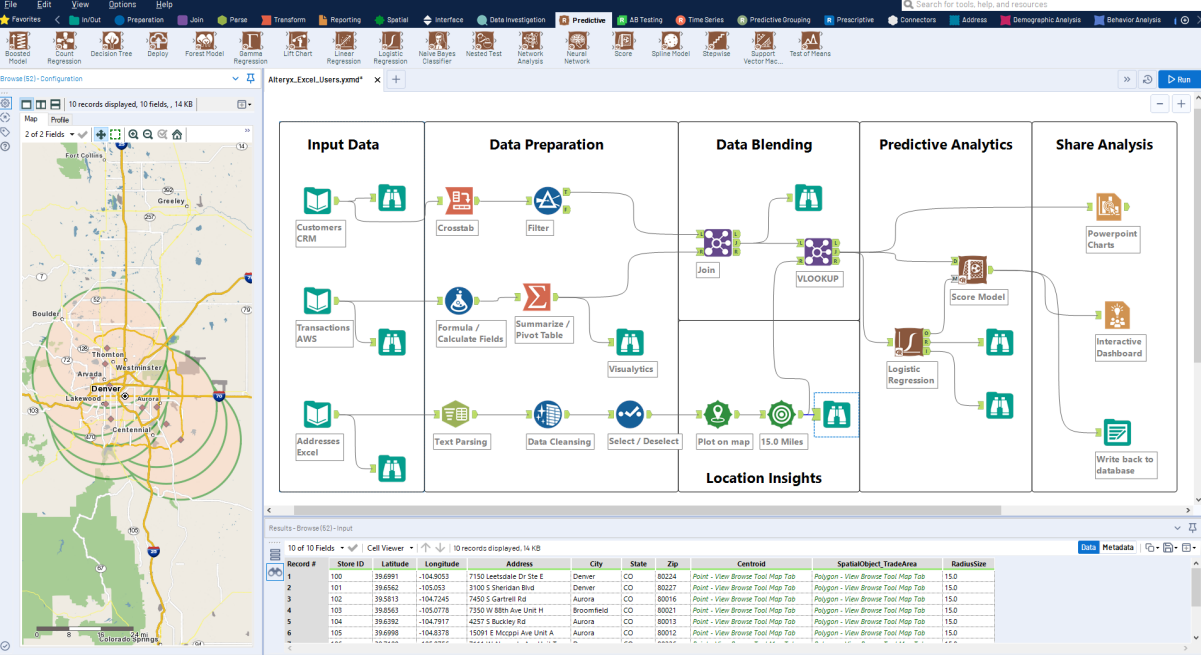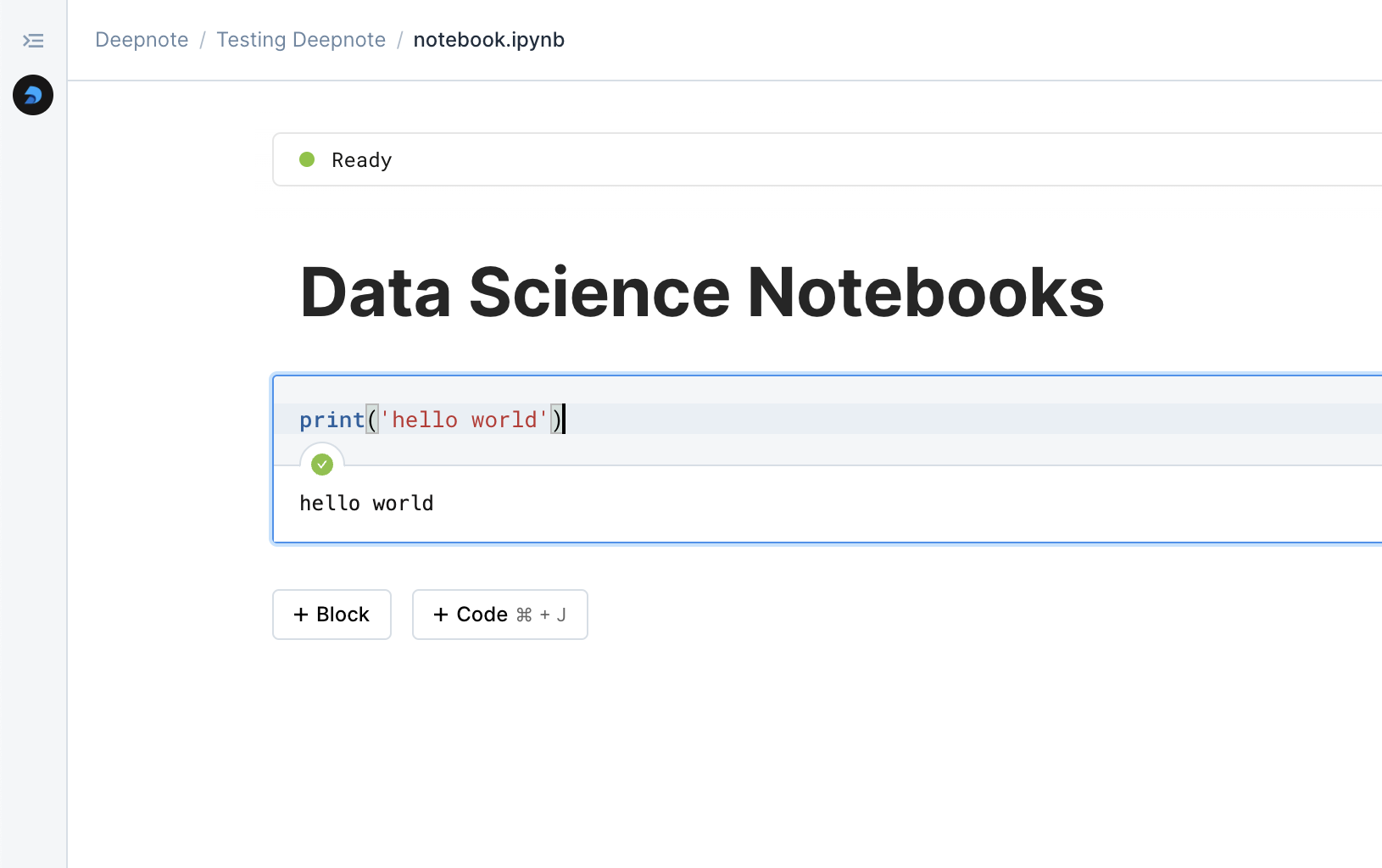

Alteryx

Comparing two data science notebooks.






In today's data-driven world, selecting the right analytics platform can significantly impact your organization's success. Alteryx and Deepnote represent two distinct approaches to modern data analytics, each with its own strengths and target audiences. Let's dive deep into what makes each platform unique and help you make an informed decision for your team's needs.
Alteryx positions itself as an enterprise-grade analytics automation platform, powered by its sophisticated AiDIN AI engine. The platform emphasizes no-code/low-code solutions, making complex data operations accessible to business analysts and data professionals who may not have extensive programming experience. Recent updates have introduced powerful generative AI capabilities, further streamlining the analytics process for enterprise users.
Deepnote, on the other hand, takes a fundamentally different approach. It's built as a collaborative data science workspace that puts code at the forefront while maintaining accessibility. The platform has gained significant attention for its modern approach to data science workflows, especially after its strategic acquisition of Hyperquery, which expanded its AI capabilities and democratized access to advanced analytics.
When you open Alteryx, you're greeted with a visual interface that emphasizes drag-and-drop functionality. The platform excels in creating automated workflows for data preparation, analysis, and reporting. Users can connect to hundreds of data sources and build complex data transformation pipelines without writing extensive code. This approach particularly appeals to business analysts and data professionals who need to quickly prototype and deploy analytics solutions.
Deepnote offers a more code-centric experience, but with a modern twist. Its notebook-based environment feels familiar to data scientists while introducing powerful collaborative features. The platform shines in its ability to combine traditional coding with real-time collaboration, version control, and AI-assisted development. This makes it particularly attractive to teams that need to work together on complex data science projects while maintaining code quality and reproducibility.
The collaboration aspects of these platforms reflect their different approaches to data analytics. Alteryx focuses on enterprise-wide collaboration through shared workflows and analytics deployment. Teams can create, share, and schedule automated workflows, making it easier to standardize data processes across large organizations.
Deepnote takes collaboration to a different level with its real-time features. Multiple team members can work simultaneously in the same notebook, similar to how Google Docs revolutionized document collaboration. The platform includes features like integrated version control, scheduling capabilities, and AI-powered code completion that make team-based data science projects more efficient and enjoyable.
Alteryx's strength lies in its extensive ecosystem of pre-built connectors and tools. The platform offers hundreds of native integrations with various data sources and business systems, making it particularly valuable for enterprises with complex data environments. The recent addition of generative AI features has made it even easier to create and modify workflows using natural language.
Deepnote emphasizes modern cloud integration and developer-friendly features. The platform seamlessly connects with popular cloud services and data warehouses while maintaining the flexibility that developers need. Its recent improvements in AI capabilities have enhanced code generation and data visualization, making it easier for teams to create sophisticated analytics solutions.
The pricing models of these platforms reflect their target markets. Alteryx follows an enterprise-focused licensing model, with pricing typically based on deployment scale and required features. While the initial investment might be higher, the platform's automation capabilities can deliver significant ROI for large organizations.
Deepnote offers a more flexible approach to pricing, including a generous free tier that makes it accessible to smaller teams and individual data scientists. This pricing strategy, combined with its modern features, has made it particularly popular among growing companies and data science teams.
Choosing between Alteryx and Deepnote ultimately depends on your organization's specific needs and technical orientation. Alteryx is the clear choice for enterprises seeking a robust, no-code/low-code solution for data analytics automation. Its strength lies in making complex data operations accessible to business users while maintaining enterprise-grade security and scalability.
Deepnote is ideal for teams that prefer a code-first approach but need modern collaboration features. It's particularly well-suited for data science teams that value real-time collaboration, reproducibility, and integrated development environments. The platform's recent AI enhancements and user-friendly interface make it an attractive option for organizations looking to build a more collaborative data science practice.
Both Alteryx and Deepnote represent the evolution of data analytics platforms, each serving distinct needs in the market. Alteryx excels in enterprise analytics automation with its visual workflow approach, while Deepnote leads in collaborative data science with its modern, code-first environment. Consider your team's technical expertise, collaboration needs, and budget constraints when making your choice. Remember that the best platform is the one that aligns with your team's workflow while enabling growth and innovation in your data analytics practice.